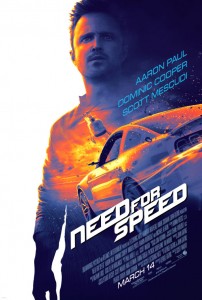 Turns out inertia and gravity and friction are still compelling cinematic forces! You’d be forgiven for forgetting- they so rarely manage to peek out from behind all the green screens these days. Filmmakers plunge ever deeper into their computer-empowered imaginations to show us bigger, more impossible things, but it’s hard to ignore the digital fog of fakery that has settled over much of popular cinema.
Turns out inertia and gravity and friction are still compelling cinematic forces! You’d be forgiven for forgetting- they so rarely manage to peek out from behind all the green screens these days. Filmmakers plunge ever deeper into their computer-empowered imaginations to show us bigger, more impossible things, but it’s hard to ignore the digital fog of fakery that has settled over much of popular cinema.
With his immediate, Everything Must Be Real filmmaking, director Scott Waugh likes to remind us how powerfully exciting it is seeing cameras pointed at objects ACTUALLY moving 100+ mph (or ACTUAL Navy SEALs participating in war reenactments, in the case of Act of Valor). And were it not for that backbone of hardcore, old-school action, Need For Speed would be functionally worthless. The film is a vague adaptation of the 18-entry video game franchise of the same name- an I.P. that offers nothing more than a recognizable name and the premise of “cars going fast.” The script –developed in-house at video game studio EA before Dreamworks jumped on– adds an extraordinarily thin plot of revenge that converges around a semi-secret race organized by, seemingly, a racer-turned-video-blogger called Monarch.
Despite the involvement of Dreamworks and Steven Spielberg, Need For Speed is built on a weak chassis clearly designed to bolt together the different locations, cars, and kinds of races that EA dictated be included, by any means necessary. At no point was it reinforced with anything like logic or subtlety, thus we have a movie in which people careen towards whatever goal was introduced a scene before, all while Michael Keaton talks into a webcam to update us on whatever the conflict, emotional stakes, or narrative developments happen to be at any given 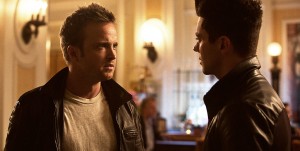 point. This is a movie in which the hero is willing to do whatever it takes to get revenge on his best friend’s murderer… by beating him in a live-streamed race. Also, you’re going to need to not think about the number of cops that clearly get the shit killed out of them, not to mention the countless civilians mortally endangered with psychotic abandon.
point. This is a movie in which the hero is willing to do whatever it takes to get revenge on his best friend’s murderer… by beating him in a live-streamed race. Also, you’re going to need to not think about the number of cops that clearly get the shit killed out of them, not to mention the countless civilians mortally endangered with psychotic abandon.
Fortunately Spielberg’s involvement resulted in Aaron Paul being cast as the lead which, along with the excellent automotive stunts, at least keeps the film on the ground. Nobody out there seethes with as much charisma as Aaron Paul, who also gets to break out that infectious smile here and there. Mostly the Breaking Bad star anchors the film with an adamant, masculine fortitude, despite being given nothing to work with. As the credits roll it’s hard to remember much of anything our hero says, or anything he does outside of a car. However, Paul parlays that lack of depth into a strong-silent-type performance clearly modeled after the reserved action heroes of the 1960s and 70s. That resolute moral certainty and purpose reads on Paul’s face, leaving the audience no choice but to believe that this guy should get the car and win the thing to defeat the other guy or whatever.
To put it in automotive terms: imagine all of the car action scenes as the engine that moves the film, while Paul is the big-ass spoiler on the back, keeping it from flying into the air and crashing when it gets too fast. (Complete the picture by imagining a bunch of neon plastic panels duct taped all over the rest of it.)
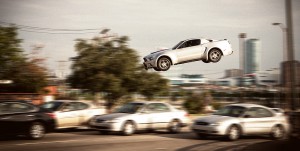 Let’s get back to the real show though: the action. Employing virtually no visible computer effects, Need For Speed is deeply old-school at its core, and unlike any blockbuster action movie you’ve seen in years. Though shot with the freedom of modern cameras, its DNA traces back to the practical badassery of Smokey And The Bandit, Blues Brothers, and Bullitt. Director Scott Waugh has stunt work in his blood (he was raised on Hollywood action sets by a family of innovative stuntmen), and he dumped that passion into a production that, wherever possible, ditched the usual compositing, car-towing and fakery.
Let’s get back to the real show though: the action. Employing virtually no visible computer effects, Need For Speed is deeply old-school at its core, and unlike any blockbuster action movie you’ve seen in years. Though shot with the freedom of modern cameras, its DNA traces back to the practical badassery of Smokey And The Bandit, Blues Brothers, and Bullitt. Director Scott Waugh has stunt work in his blood (he was raised on Hollywood action sets by a family of innovative stuntmen), and he dumped that passion into a production that, wherever possible, ditched the usual compositing, car-towing and fakery.
Aaron Paul actually drove million dollar cars at 120mph. It shows. Steve Mescudi (AKA Kid Cudi) actually piloted a military helicopter in the air. It shows. A Shelby-influenced Ford Mustang was actually hung by cables over a giant canyon. It shows. Etc.
Using a suite of cameras of all sizes (and expendability), Waugh dynamically captures these stunts and weaves them into exhilarating sequence after sequence that rips apart green-screens and kicks CGI in the ass. It would seem hard to screw this stuff up, of course- when you have the balls to slam around a Gran Torino at high speeds or spectacularly destroy a Bughatti (cue: Ace Hood flinching), the footage is going to be great. A superb soundtrack gives each vehicle its own distinctive timbre, that all combines in a roaring, muscular symphony. Solid editing leaves the strong camera moves and the fluidity of the races largely intact. Even the jump between camera formats stays just on this side of sloppy- any given choice of a shot feels thoughtful rather than masturbatory. Which is to say you’re not going to see the same stunt over and over from 8 different GoPro angles…
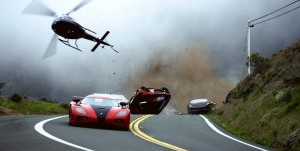 But let’s be real for a moment: there’s not a lot of cinema in Need For Speed. Along with the first draft storytelling, the pacing is a mess and –aside from one pretty neat time-lapse shot– I’m not sure there’s any sense of coherent transition in the whole movie. Cars assemble and races just sort of start, for example. Meanwhile, any and every scene not involving a machine is utterly inert. Scenes of exposition and emotional beats creak like rusty tie-rods, while Imogen Poots struggles with an embarrassingly written (and ultimately fridged) quirky damsel.
But let’s be real for a moment: there’s not a lot of cinema in Need For Speed. Along with the first draft storytelling, the pacing is a mess and –aside from one pretty neat time-lapse shot– I’m not sure there’s any sense of coherent transition in the whole movie. Cars assemble and races just sort of start, for example. Meanwhile, any and every scene not involving a machine is utterly inert. Scenes of exposition and emotional beats creak like rusty tie-rods, while Imogen Poots struggles with an embarrassingly written (and ultimately fridged) quirky damsel.
All of this material exists merely to move us to the next action sequence, and usually does so mercifully quick. The exception would be the interminable sequences of Monarch and his web cam. A character completely removed from the actual story is forced to effectively narrate the film, and add some half-hearted poetics. Even wearing his best Hunter S. Thompson, Michael Keaton’s tank only holds so much gas and he’s saddled with a cross-country, expositional road trip.
There’s also an attempt at infusing a sense of camaraderie reminiscent of The Fast & The Furious into the film, which largely falls flat. A lot of forced bro humor and hollering don’t make for as immediately memorable a family dynamic- the film’s always got somewhere it wants to go. It gets hard to hear the jokes and feel the love over the engines revving for the next race. And try as the dogshit soundtrack might (with cringe-worthy “hardcore” remakes of classics like All Along The Watchtower and Fortunate Son) no amount of sanguine bro-rock adds any real emotional energy.
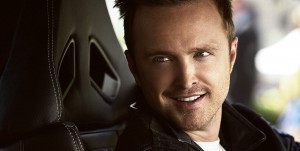 Man, are the car chases solid though. Frankly, it’s fun to watch Aaron Paul have fun. That shouldn’t be enough. If we’re grading on a spectacle curve though, it passes. If only the story had the same balls as the stunts. That said, would it be so terrible to send the message to Hollywood that there’s a real hunger for cameras to be pointed at cool things actually being done? I wonder. It’s a story worth telling that separates a stunt reel from a movie though, so let’s not forget to demand some padded seats and a decent coat of paint around that big adrenaline-pumping engine next time.
Man, are the car chases solid though. Frankly, it’s fun to watch Aaron Paul have fun. That shouldn’t be enough. If we’re grading on a spectacle curve though, it passes. If only the story had the same balls as the stunts. That said, would it be so terrible to send the message to Hollywood that there’s a real hunger for cameras to be pointed at cool things actually being done? I wonder. It’s a story worth telling that separates a stunt reel from a movie though, so let’s not forget to demand some padded seats and a decent coat of paint around that big adrenaline-pumping engine next time.
Rating: 




Out of a Possible 5 Stars